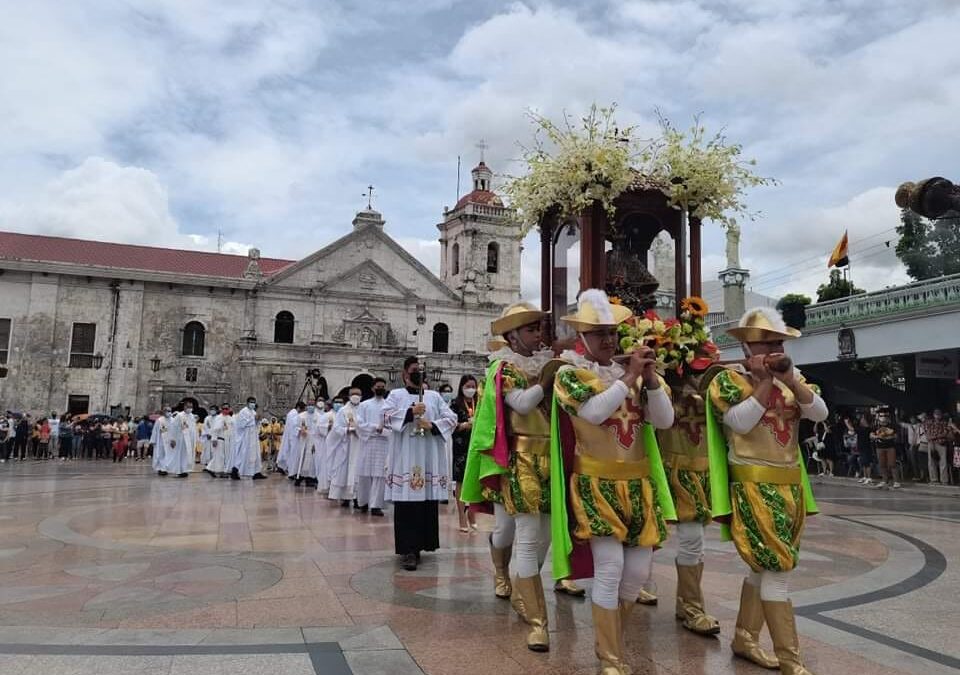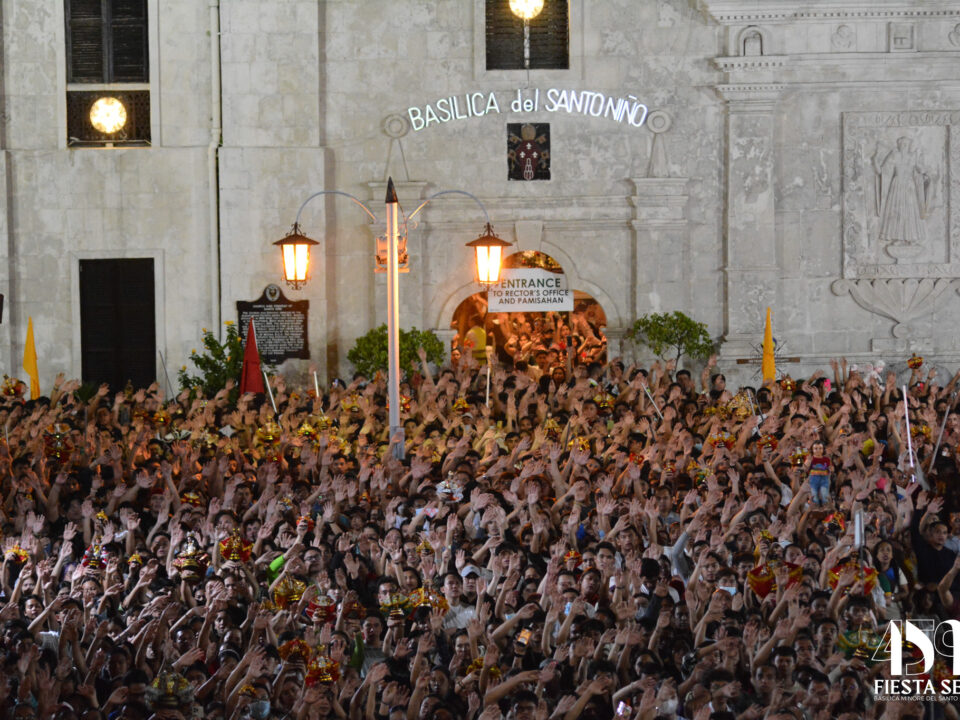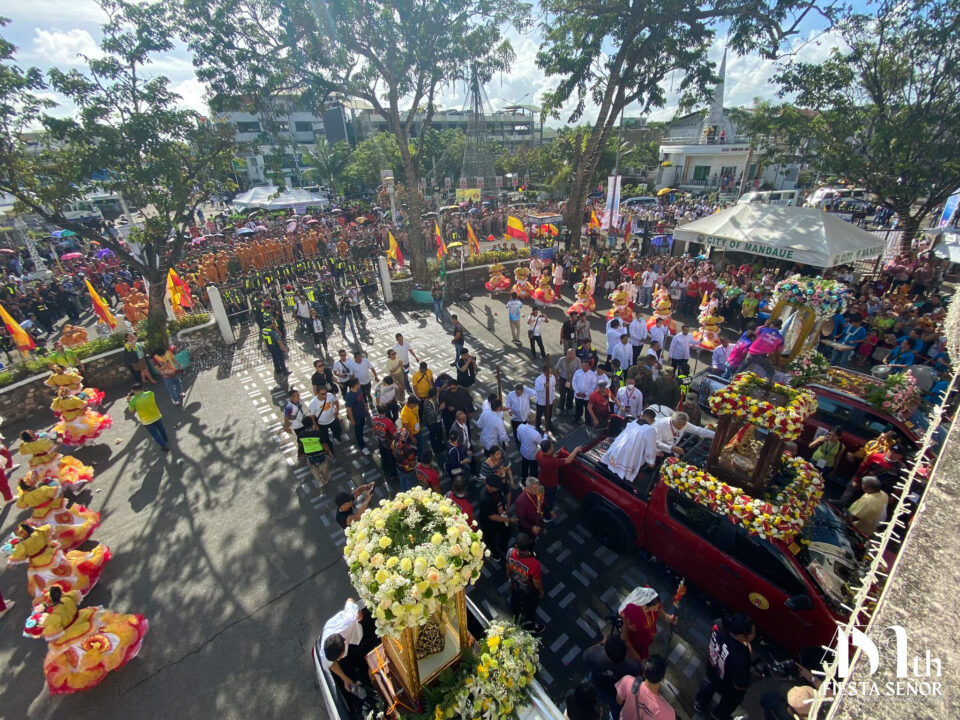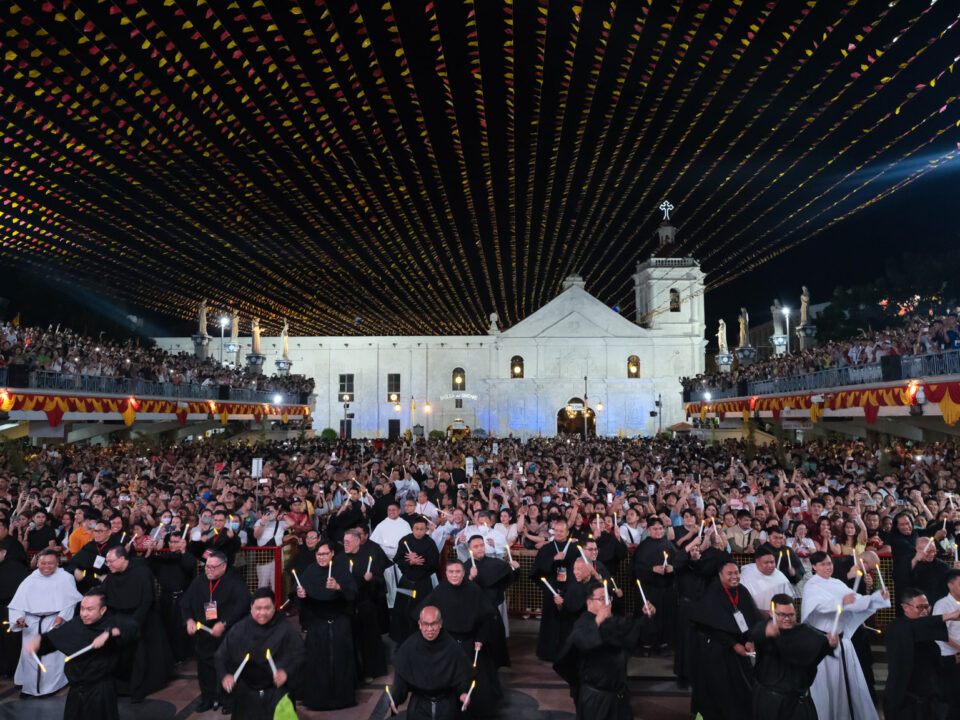“Ang Pagkakaplag”: The Blessed Day of Discovery

Excerpt from an unpublished script “From the Arrival to the Discovery: The Journey of Sto. Niño” written and presented by Fray Ric Anthony A. Reyes, OSA on January 29, 2021 to the “Gabii sa Kabilin 2021 Online Activities” Cebu City, Philippines
The instance of the finding according to the records presented by Gaspar de San Agustin, OSA in the Conquistas and corroborated by the Acta de Hallazgo (the Act of the Finding or others may refer it as Tanto Juridico) of Miguel Lopez de Legazpi and notarized by Fernando Riquel, the official notary of the expedition is summarized as follows:
- The eventual landing of the expedition to Cebu happened at near dusk of April 28, 1565 as they were repulsed with aggression by the natives from the day before they formally arrived near Cebu.
- When the native repulsion and defensive attacks were responded with the Spanish canons, the natives retreated to the hinterlands towards the mountain areas of Cebu. The retreat was so immediate that the Spaniards were surprised as they were expecting the encounter would be long and bloody.
- As they were going to the village, some were commanded to guard the village’s entrance ways. Some of the soldiers were tasked to survey the unharmed houses. Some houses were burned either because of the canon fires of the armada or because the natives set them on fire to defer the foreigners’ pursuit.
- Two of the men from the Capitana (captain general’s ship) of the said expedition were tasked to survey the houses: the sailor Juan de Camus who was also known as Bermeo because he came from that place with the same name in Vizcaya. The other one was Pedro de Alorza, an artilleryman of the same ship.
- Camus entered a house of a native leader. There he found two boxes bounded by a rope suggesting that they are being readied by those living in that house for evacuation. But the contents are unremarkable and hence he drew deep into the house and found a pine box. When he opened it, he found the image of the Sto. Niño. Ecstatic, Camus ran out from the house and in joy he blurted these words in his Viscayan dialect “Para el cuerpo de Dios, Hijo de Santa Maria hallado has!” (“For the body of God, I found the Son of Holy Mary!”).
- Everybody went into the house out of curiosity and excitement, as well. Legazpi entered the house, weeping, he venerated the image of the Sto. Niño with the Augustinian friars, also weeping in joy for the prodigious event.
- It was followed by three decrees by Legazpi: the founding of the Cofradia del Smo. Nombre de Jesus; the plan to construct a church and convent of the Augustinians and the setting of April 28 as the fiesta of the Sto. Niño.
San Agustin, in his narration of the auspicious day of April 28, 1565, Saturday, in his Conquistas, cleared the air of doubt that the finding of the image was already pre-arranged. He said, commenting on the inspection done by the group of Miguel Lopez de Legazpi on some unharmed houses by the conflagration in the native village after their hostile attack to the foreigners: “…while the soldiers investigated the rest of the houses that the fire had spared, not without some great mystery and divine intervention as proof of one of the greatest gifts read in the History of the Indies, serving to aggrandize our own celebrated conquest of the Philippines that included the finding of the image of the Child Jesus, whose marvelous discovery was etched in the memory of various historians.”[1] San Agustin’s purpose is to view that the conquest was gifted with the discovery of the Sto. Niño was all of God’s will — a mystery which is above the comprehension and expectation of everybody.
The finding of the image of the Sto. Niño opened another chapter in the history of the image while it also continues to write the abrupt curtain-call in its history in 1521. As discussed above, the image’s history turns out into obscurity and would even drift to anonymity if the Legazpi expedition did not receive this manifestation of the image in the time they need most heaven’s favor for their mission’s direction.
As it was truly unexpected, the finding was interpreted as a sign of Divine intervention and response first, to Don Miguel Lopez de Legazpi, whose reaction was truly of religious fervor. He “got into his knees, weeping copiously and displaying singular acts of devotion…” He was a devout Catholic, a member of a Confraternity in Mexico City honoring the Most Holy Name of Jesus. Finding the Sto. Niño image in the midst of a less expected opportunity, seeing any semblance of his faith, Legazpi read this movement of the Divine Hand of God as the right path to undertake the evangelization and Christianization of Cebu and of the whole archipelago starting from the epicenter of the finding. From there, the first acts or the general’s decree were devotional and religious in nature:
- The first is the the foundation of a Cofradia of Santisimo Nombre de Jesus patterned after that from Mexico where he was also a member. In the new foundation of the Cofradia, he would act as the first “Hermano Mayor” the principal brother-member of the Cofradia which assures the propagation of the devotion to the Holy Name of Jesus.
- Second, “the place where the house stood where the miraculous image of the sacred and prodigious Child was discovered was signaled out as the church and convent of our Father Saint Augustine.”[2] The importance of this act contained within the decree of possession of the land under the Spanish dominion should be understood not only as a political act. It was not just for the sake that the archipelago was handed over to the Spanish King — at that time in the name of King Philip II — but, according to the understanding set by Pope Alexander VI’s Inter Cetera and the details of the Treaty of Tordesillas, that the Catholic faith could be dispersed in that part of land, Christ would be proclaimed to those who had not heard the Good News of salvation. The foundation of the church and convent of the Order of Saint Augustine in Cebu signaled the will of Legazpi to evangelize the natives in the tenets of Christian faith.
- Lastly, Legazpi instituted that day, April 28 to be the feast of the Finding of the Image. This is the traditional and a devotional commemoration of the “miracle” of the finding. It was eventually affected when in 1641, the Prior Provincial of the Augustinians mandated the transfer of the feast every January 14 which must be an effect of the consolidation of the Feast of the Most Holy Name of Jesus.
The description of the image was also recorded. It was far from the pomp and regality of our present depiction of the image. Here are the characteristics of the image at the time of the finding:
- The height of the image is of a tercia, a unit of measurement which is equal to one-third of a vara; about 11 inches in today’s measurement standards.
- The image wore a flounced shirt, in Spanish “camisa de volante”, this refers to a kind of a ruffled shirt.
- The dress was of red damask, in Spanish “ropa de damasco colorado” refers to another dress over the camisa de volante, probably a loose tunic-like dress which is red in color.
- It has a flamenco hat made of velvet in the old style. This may be likened to the ecclesiastical hats like that of a galero.
- It had worn also a cross pendant from either a chain or a gold collar.
- It held a small sphere on its hand. This refers to the left hand of the image clasping a spherical shape thing called globus cruciger — a representation of the universe (not of the earth).
The image has then found shelter where it was venerated by the Spaniards and the native Cebuanos in the Augustinian church and convent known as Sto. Niño. The church, though part of the convent, is properly called as Iglesia de San Agustin because this has been the undisputed first house of the Augustinians in the Philippine archipelago. The Church may have undergone many transformations throughout the years but it always stood on the very epicenter of the finding — on that humble native home.
[1] San Agustin, Conquistas, Bk. 1, Ch. 26, p. 335
[2] San Agustin, Conquistas, Bk. 1, Ch. 27, p.347





